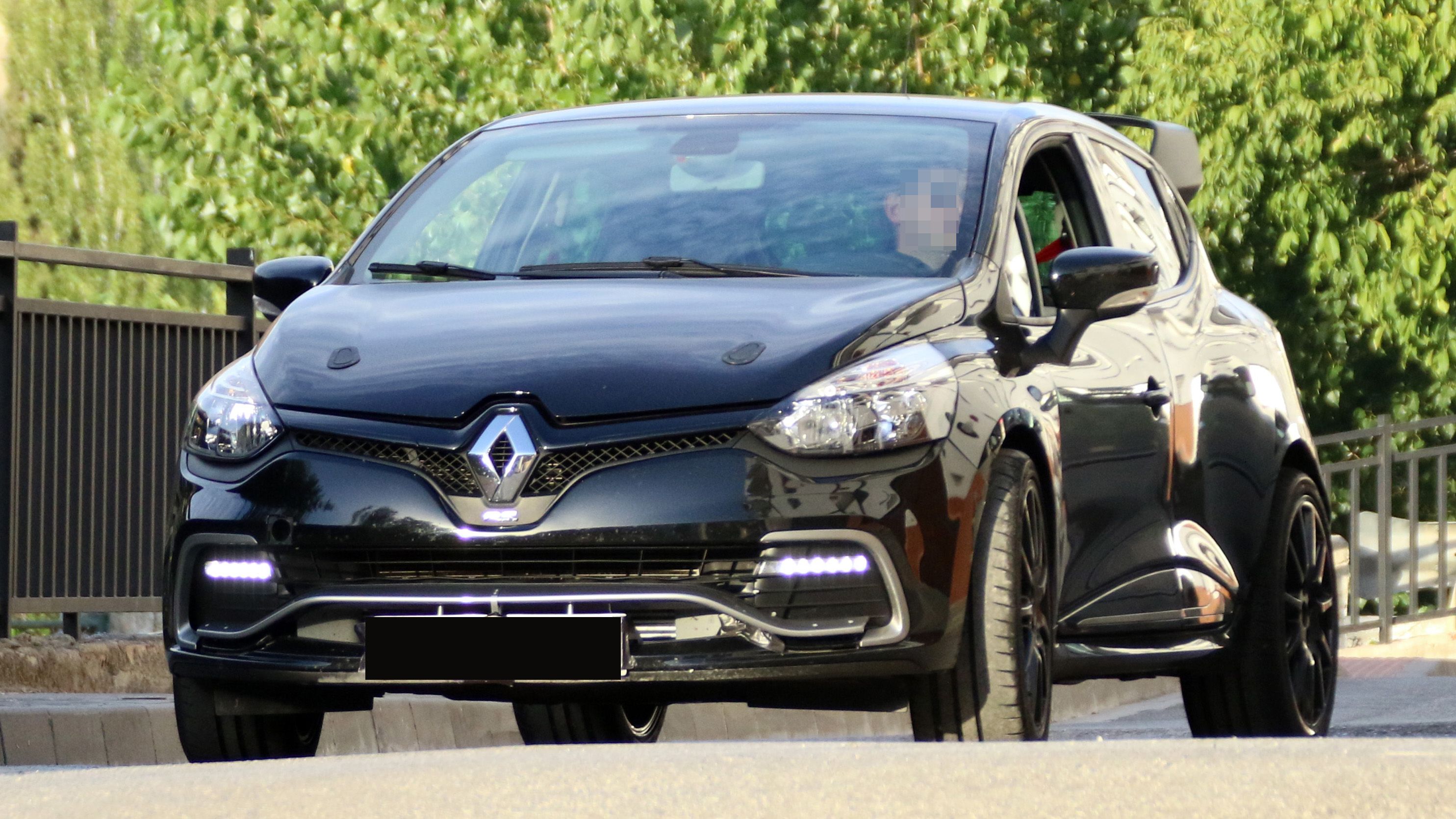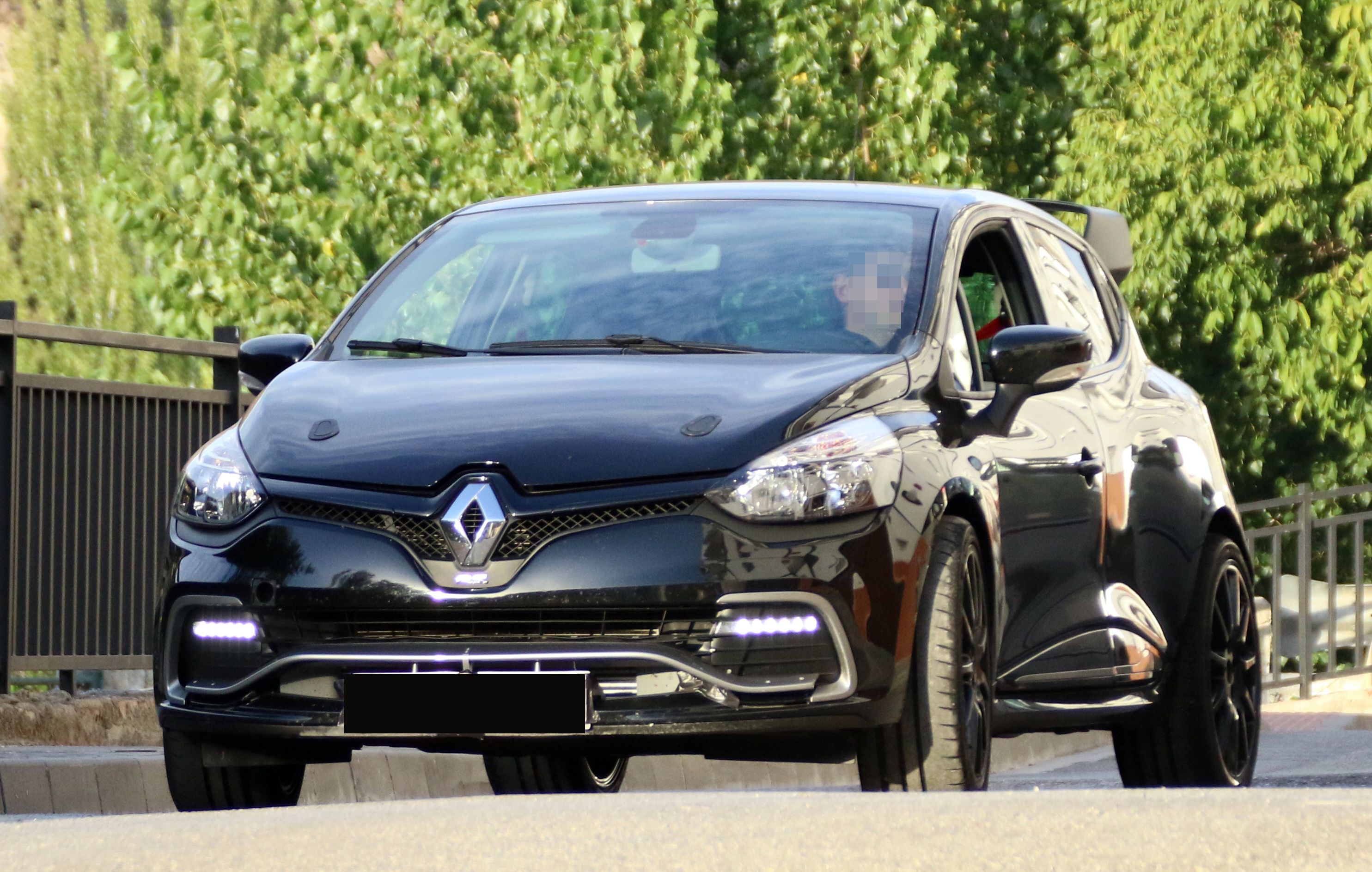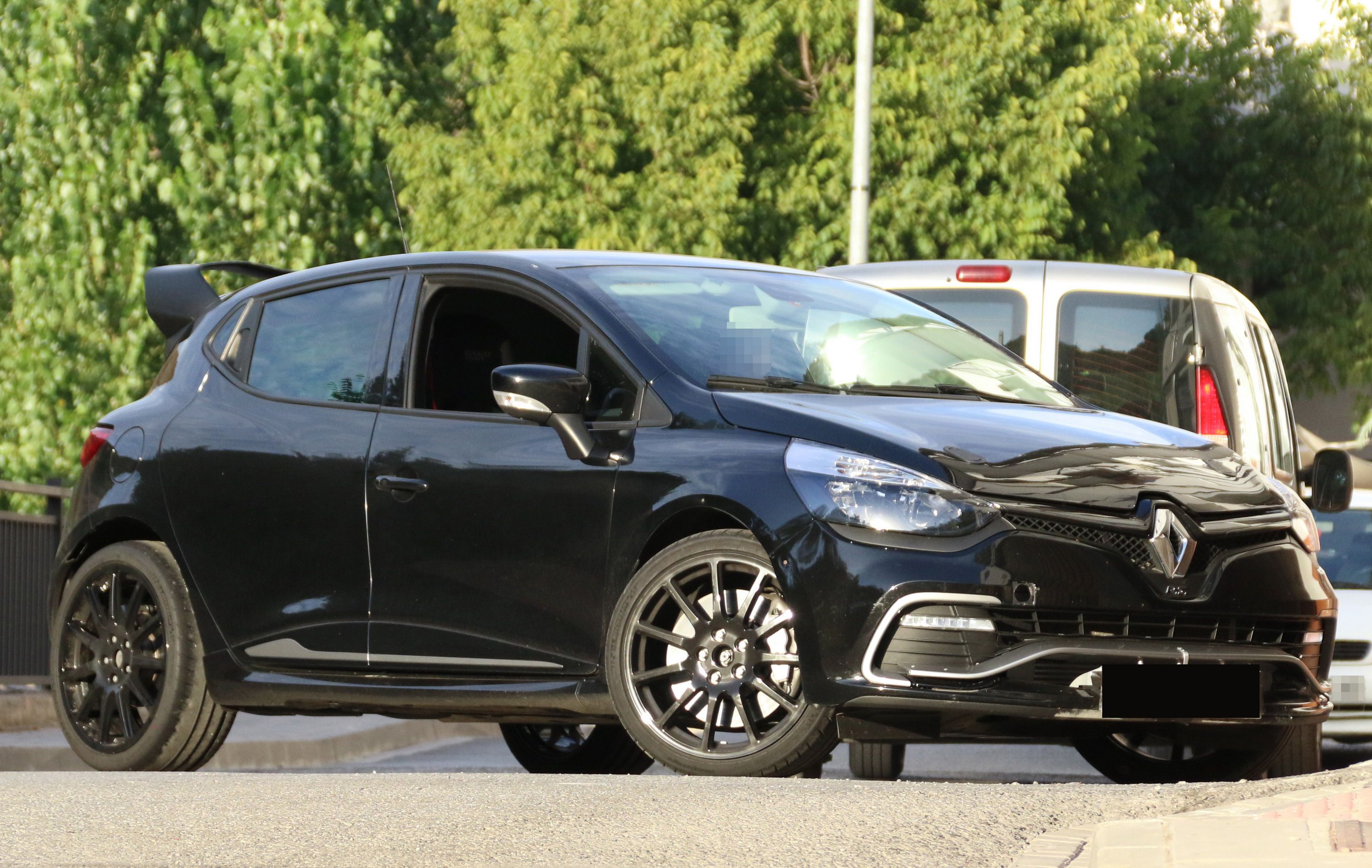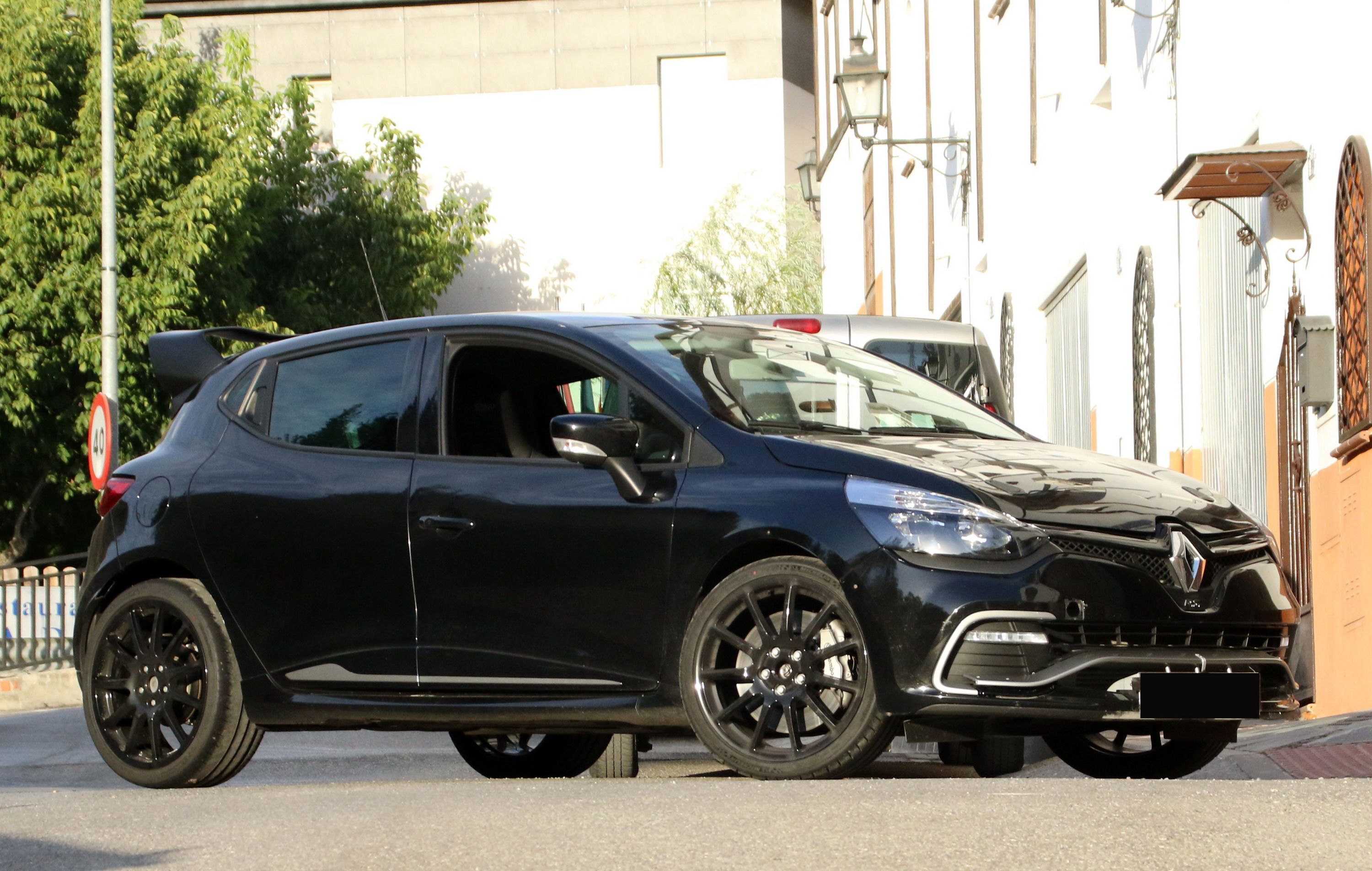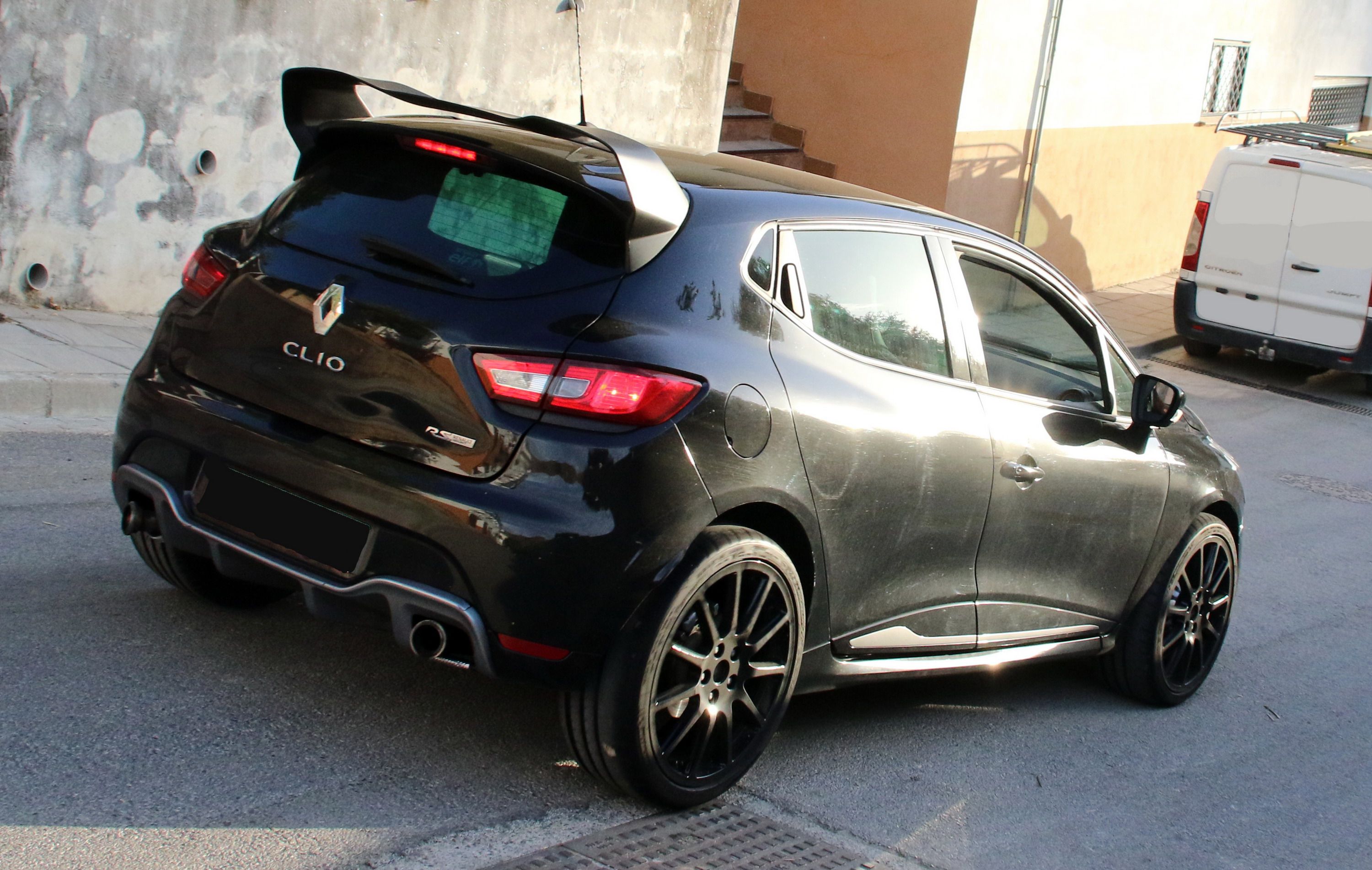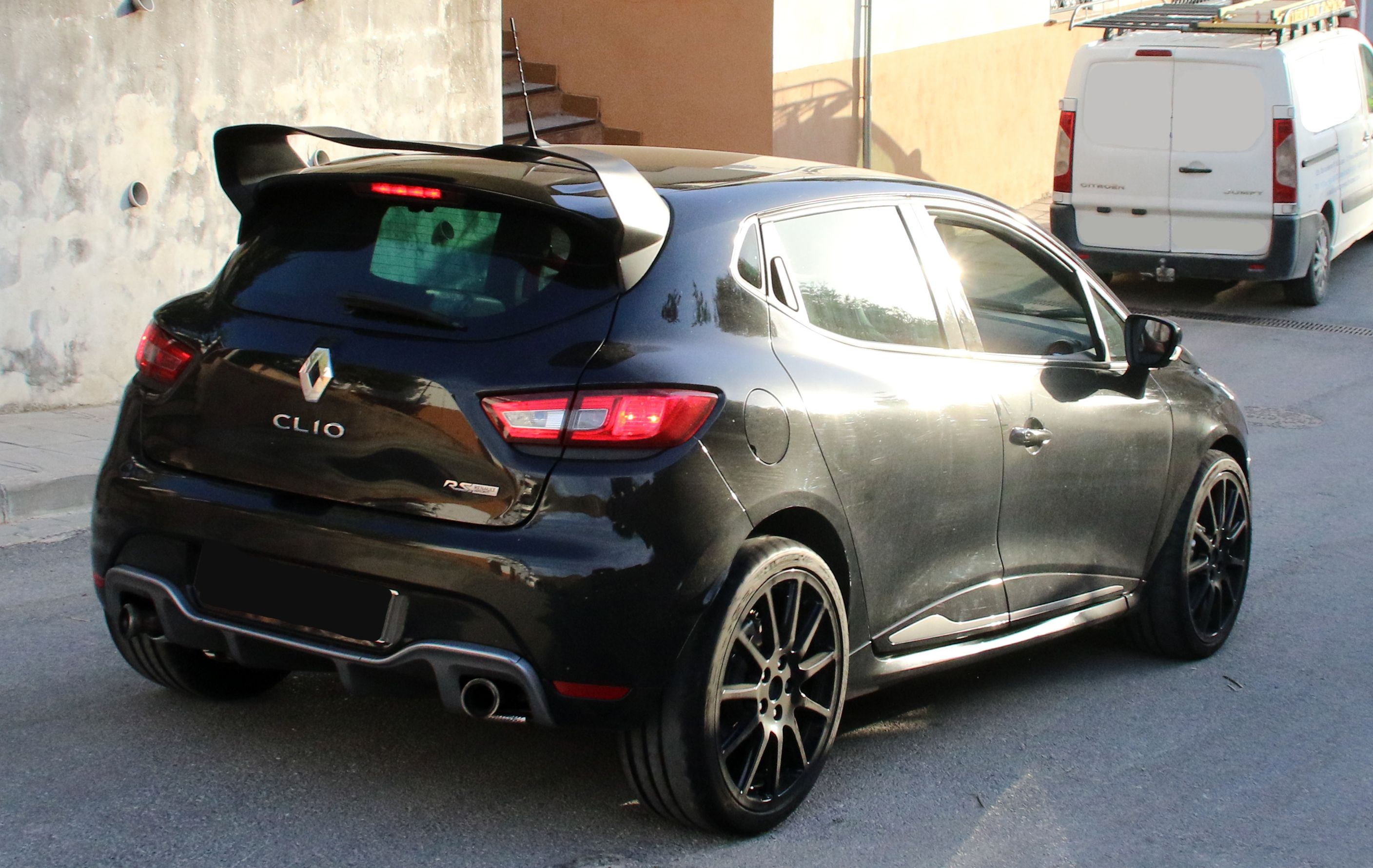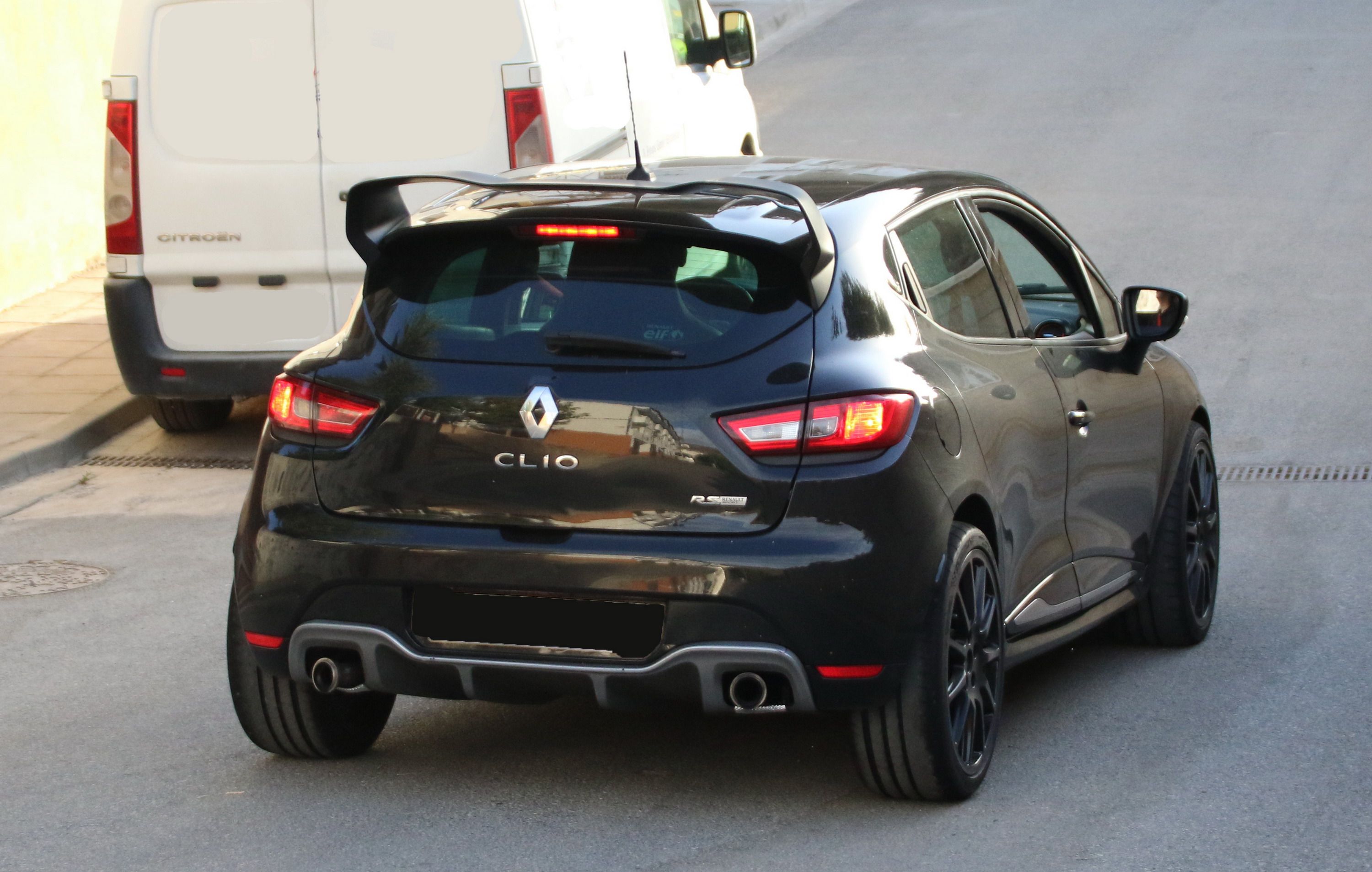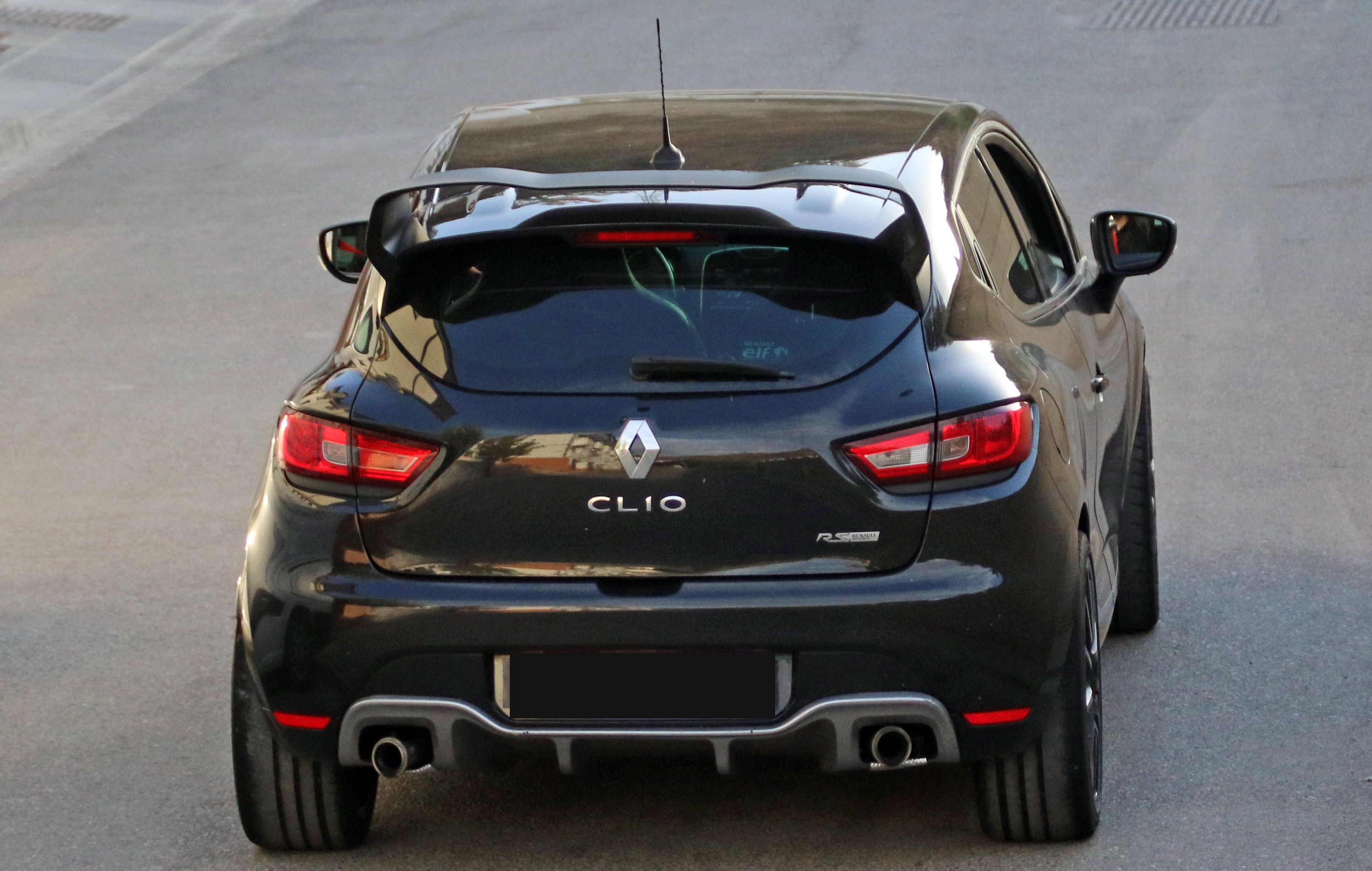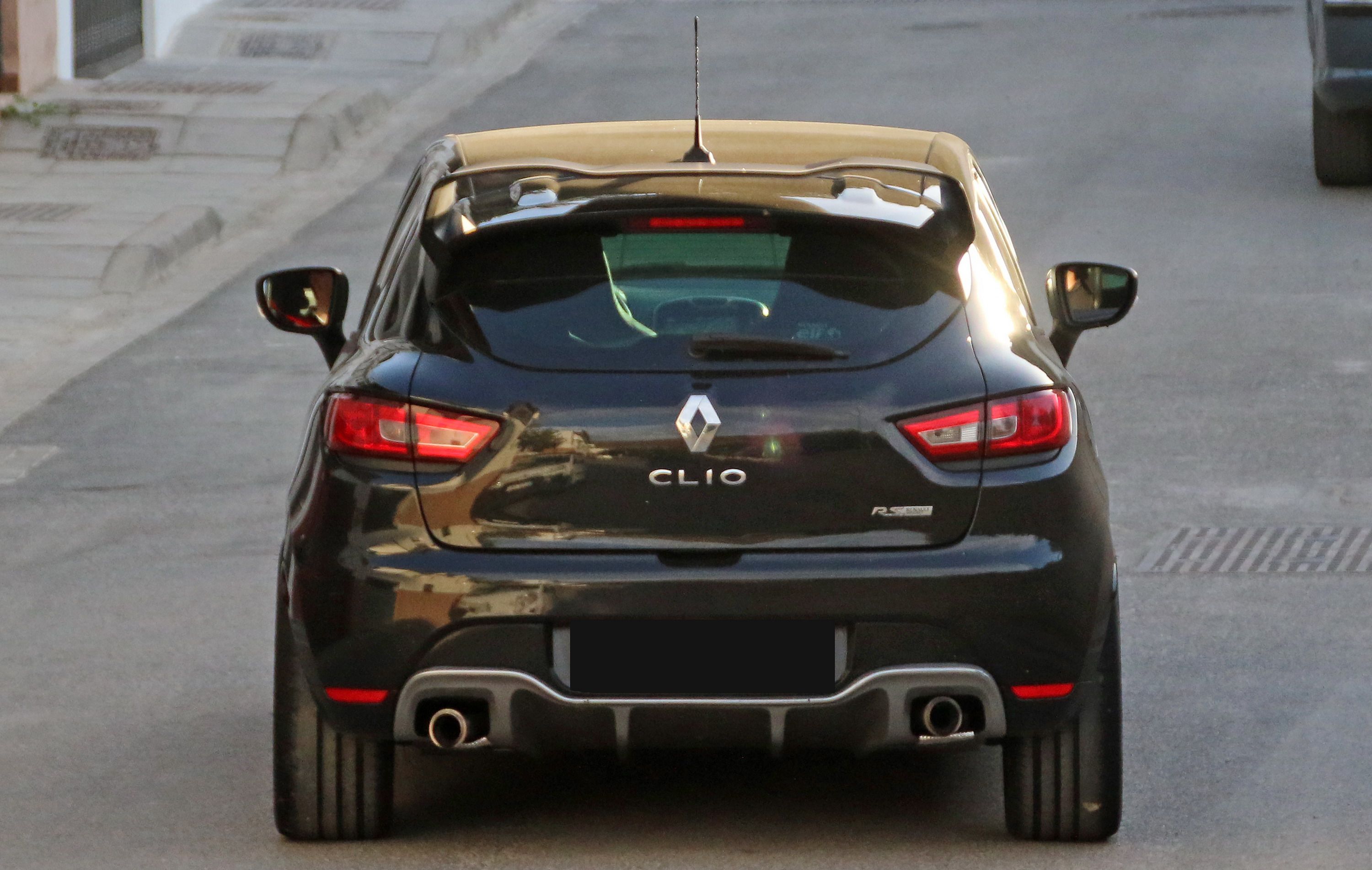The fourth-generation Renault Clio was unveiled at the 2012 Paris Motor Show. Highlighted by a significantly redesigned body and interior, the new hatchback also received brand-new and updated engines. Another major change is that unlike its predecessors, it's only available in five-door hatchback and wagon versions, with Renault having dropped the three-door hatch and four-door sedan variants. Underpinned by the ubiquitous Alliance B platform co-developed with Nissan, the fourth-gen hatch also spawned a new track-ready model, the R.S. 200, as well as a limited-edition R.S. 220 Trophy EDC. Come 2016, and Renault is working on an even more extreme version of the Clio R.S..
The upcoming hot-hatch was just spotted testing in Europe and by the looks of things it is heavily based on the Clio R.S. 16 concept that Renault unveiled at the Formula One Monaco Grand Prix in May 2016. Named after the company's 2016 season F1 car, the R.S. 16 was created to mark the Renault Sport’s 40th anniversary and to celebrate the brand’s return as a Formula One team. The concept features unique styling features on the outside, while motivation comes from Megane R.S. 275 Trophy-R, a significant update over the Clio R.S. 220 Trophy, the most powerful production Clio to date.
Even though Renault has yet to confirm that the R.S. 16 is set to become a production model, the hatchback's presence on public roads alongside the upcoming Alpine sports car suggests that Renault wants to take things up a notch when it comes to its small hatchback. Not much is known about it as of this writing and the "R.S. 16" name is not yet official, but we've come up with a speculative piece about what this beefed-up Clio might bring to the table.
Continue reading to learn more about the Renault Clio R.S. 16.
2018 Renault Clio R.S. 16
- Make: Array
- Model: 2018 Renault Clio R.S. 16
- [do not use] Vehicle Model: Array
Spy Shots
September 15, 2016 - First testing session
Exterior
Unlike most test cars, the Clio R.S. 16 is camo-free, with every inch of its body out in the open. And it's because of this that we can tell that the black-painted hatchback is no regular Clio RS. Although the test vehicle doesn't have the concept's "R.S. Vision," checkered-pattern daytime running lights, it features the revised lower apron and a pair of locking pins on the engine hood. Both were seen on the black car that Renault revealed alongside the yellow R.S. 16 with the special DRLs. The biggest hint that this is indeed the R.S. 16 is the massive roof wing around back. The element is identical to that of the concept car and it has yet to be offered on previous Clio models. The exhaust pipes are also different, but based on the way they look, they're likely experimental and the production units will also look like the concept's. Other than that, the test car appears to be identical to the standard R.S.
Interior
Note: Renault Clio R.S. 220 Trophy interior pictured here.
Our paparazzi weren't able to get a good glimpse inside the car, but they did say that the hatchback is missing the rear seats. These were also removed on the concept cars in order to make them as light as possible. Other than that, we expect the production R.S. 16 to be based on the Clio R.S. 220 Trophy. Look for race-ready bucket seats with six-point harnesses, a leather-wrapped steering wheel with "R.S. 16" badging and a 12-o’clock stripe. A special plaque to speak of the car's limited availability should also find its way on the dashboard.
Based on the fact that the 220 Trophy comes with carbon-look air vent surrounds, door handles, and gear lever base plate, the Clio R.S. 16 should get similar treatment, or even some real carbon-fiber trim. It could also have flat, lightweight door panels as a weight-reducing measure. Finally, the French company will also add the Trophy’s optional Renault Monitor, which provides on-board telemetry, including a setting that gives the driver five levels of throttle pedal sensitivity and the option to record lap times, average lap speeds, and 0-to-62 mph sprints.
Drivetrain
Under the hood, the production model will once again mimic the concept car, and get its juice from the 2.0-liter mill from the Megane R.S. 275 Trophy-R instead of the 1.6-liter turbo-four in the R.S. 220 Trophy. The Megane's four banger cranks out 271 horsepower 266 pound-feet of torque, a 54 horsepower and 74 pound-foot improvement compared to the 1.6-liter unit, which is a lot for a hatchback this size. Along with the engine, the R.S. 16 concept also gained the Megane’s six-speed manual gearbox over the Clio’s EDC automatic transmission, a change that's expected to occur on the production model too.
Renault has yet to release performance figures, but it’s safe to assume that the R.S. 16 is significantly quicker than the Clio 220 Trophy. With the latter hitting 62 mph in 6.6 seconds, the R.S. 16 should need around six ticks to do the same. Top speed could also increase from 146 to 155 mph.
Besides the new,more powerful engine, the souped-up hatchback will also feature a new cooling system, a new suspension to handle the car's new performance characteristics, and bigger brakes. There's no word as to whether Renault will drop the concept's Akrapovic exhaust system into the production car, but that's very like to happen.
Prices
Pricing for the R.S. 16 is obviously not available at this point, but you can bet on it becoming the most expensive Renault Clio ever built. With the Clio R.S. 220 Trophy priced from £21,780 (about $28,840 as of September 2016), it's safe to assume that the R.S. 16 will fetch in excess of £25,000 (around $33,100). Actually, I wouldn't be surprised if it costs more than the Megane R.S. 275, which retails from £26,480 (about $35,070). The high sticker is likely due to the fact that the R.S. 16 will be built in very limited numbers.
Competition
Volkswagen Polo GTi
Essentially a shrunken Golf GTi, the Polo GTi borrows the aggressive styling cues of its bigger brother. Updates include a sportier front grille and bumper, signature red stripes and badges, a roof spoiler, dual exhaust pipes, and two-tone wheels. Similarities continue inside the cabin, where the little hatchback comes with sportier front seats, a leather-wrapped steering wheel, as well as Volkswagen’s iconic "Interlagos" plain seat pattern. Power comes from a 1.8-liter turbo-four that cranks out 189 horsepower. While that might not seem like a lot compared to the Clio R.S. 16, the massive 236 pound-feet of torque make up for it. The oomph is enough to push the GTi from 0 to 62 mph in around 6.7 seconds. Granted, the Polo GTi is not as track-oriented as the R.S. 16, but this comes at an advantage at the dealership, where the German hatchback starts from only £19,125 (about $25,325).
Find out more about the Volkswagen Polo GTi here.
Ford Fiesta ST200
The most peformance-oriented Fiesta you can buy nowadays, the ST200 comes with a wide array of aggressive exterior features and a sporty interior with Recaro seats and all sorts of unique detailing. Under the hood, the 1.6-liter, EcoBoost, four-cylinder engine pumps out up to 212 horsepower and 236 pound-feet of torque in its overboost mode. That's not as much as the Clio R.S. 16, but more than the Polo GTi. The Fiesta ST200 is also quicker than its German rival, being able to hit 62 mph in 6.5 seconds. Pricier than any other Fiesta at £22,895 (around $30,320), the ST200 is stil significantly more affordable than what the Clio R.S. 16 is expected to cost.
Learn more about the Ford Fiesta ST200 here.
Conclusion
The Clio R.S. 16 is Renault's way to prove that it can push the hatchback's limit farther than ever before. That's great news for performance car enthusiasts, which will gain access to one of the most extreme small hatchbacks ever created. The R.S. 16 is essentially a road-legal race car and it's what makes Renault stand out in this crowded market. Let's face it, the Golf GTi and Fiesta ST200 cannot compete with the R.S. 16, and if Renault takes its new car to the Nurburgring, we might witness it establish a record for front-wheel-drive cars that will stand for many years to come.

